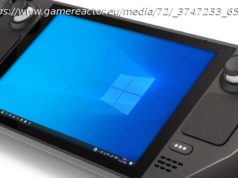Fitbits compared: features, prices, displays, batteries, GPS, water resistance and more. We explain which is the best activity tracker for you.
Fitbit currently sells five activity tracker wristbands – the Fitbit Flex 2, Alta, Alta HR, Charge 2, and Blaze – and two clip-on activity trackers: Fitbit Zip and One. That’s a confusing range, and there are rumours of a Fitbit smartwatch too now that the company no longer sells its Surge sports tracker.
Activity trackers can motivate you to exercise more or improve your sports and fitness regimes. Even moderate exercise can have a positive effect on your physical and mental health.
Like Hoover and vacuums many people regard all activity trackers as « Fitbits » but there are other makes so be sure to read the best activity trackers currently available to buy too. Fitbit is by far the market leader, and has quality trackers for most people.
Super-serious sports, running and fitness fanatics – for whom even the now-discontinued Fitbit Surge isn’t sophisticated enough – may prefer the more expensive top-end Garmin or TomTom trackers, which focus on specific sports such as running, cycling or swimming. The Surge was the oldest Fitbit tracker and has long been overdue an upgrade. We presume one is imminent as this tracker has been removed from the Fitbit product list online.
Here’s a brief summary, before we go into more detail about features, price, battery life and more.
It’s possible to look at the Fitbit activity trackers in three groups.
The clip-on Zip and One offer the least features but are perfect if you don’t want to wear a wristband. We do worry that these are easier to lose than the wristbands, though.
The watch-buckle Charge 2, Charge HR and Blaze wristbands boast the most features, including Floors Climbed via the altimeter. They also show more right there on their displays, including Call and Text Notifications from your phone, including Caller ID. The Alta HR boasts the watch buckle but not the altimeter for Floors Climbed. We prefer the watch-buckle clasp as it’s stronger than the pop-clasp.
The slimmer pop-clasp Flex 2 and Alta wristbands are more chic, and arguably aimed at women, although there’s nothing in the design to put off men. However, neither model has an altimeter, a heart-rate monitor or multi-sport functions. The Alta HR is similar but boasts the watch buckle and heart-rate monitor.
One solution is to own more than one Fitbit! You can sync multiple trackers to your Fitbit account, so maybe wear a fully featured sporty tracker during the day, and slip on a slimmer, more chic Alta or Flex 2 in the evening.
We love the Flex 2 minimalist display, but think the Alta’s better display gives you more data right there on the wrist. In some ways the Alta HR is the best of both world’s, being super slim but still having the heart-rate monitor.
The Zip is the cheapest Fitbit, and if you can live without the altimeter and sleep tracking then this is a great entry point. Sleep tracking is fun but not at the top of most people’s fitness lists, but the buzz is a great way to know you’ ve reached your key target. Is that worth an extra £30 for the One or £20 for the Flex 2? That’s really up to you.
When it comes to choosing between the four Fitbit watch-buckle wristbands it’s really a matter of price vs features. The top-end Surge, with its GPS, was the obvious choice for the serious fitness nut – or you can wear one, and pretend to be a performance fitness nut, and just use it to count your steps and tell you the time.
But the multi-sport functions and smartphone GPS connectivity of the Charge 2 and Blaze should satisfy most fitness enthusiasts. Their lack of built-in GPS might disappoint some, but most runners take their smartphone with them for music or call, so their wireless connection to the phone’s GPS does the same trick.
The Alta HR misses some sports features but is the slimmest heart-rate monitor you can wear on your wrist.
The Fitbit Blaze is similar to the other Fitbits but comes with a flashier colour display. It will appeal to those people who want an activity tracker but also a watch-like timepiece. Its colourful displays are also going to attract attention.
Choosing the best Fitbit for you will come down to features and price, but you should also consider size, battery life and of course looks. There’s a Fitbit tracker for everyone. If you’re unsure you can always later sell up and upgrade to a higher-spec Fitbit tracker. Getting fitter now is the main thing, so get started soon.
Let’s start with a key factor: cost. None of the Fitbits are pocket change like the Xiaomi Mi Band, but we’ve listed the best prices for each Fitbit below. You can also order direct via the Fitbit Store.
Although it’s officially discontinued (replaced by the Charge 2) the Fitbit Charge HR can still be found online at discounted prices. We’ve seen it on Amazon for less than £80. The same is true of the Fitbit Surge, which can be found for under £150 on Amazon.
For more detailed reviews of each model, see our full reviews, listed below.
Fitbit One review | Fitbit Zip review | Fitbit Flex 2 review | Fitbit Alta review | Fitbit Alta HR review | Fitbit Charge 2 review | Fitbit Blaze Review | Fitbit Surge review
The cheap clip-on Fitbit Zip lacks the sleep tracking and silent wake alarm found on the Fitbit One. Neither clip-on tracker features a heart-rate monitor, or the sports functions and notification alerts.
The cheapest Fitbit wristband is the Flex 2, but this lacks some features of the more expensive Fitbits, such as an altimeter to measure « floors climbed », multi-sport functions, heart rate, Caller ID, text notifications and GPS tracking. But casual users don’t really need the heart-rate monitor or sports capabilities, and only the top-end Surge actually boasts a built-in GPS anyway. The Flex 2 is also the only waterproof, swim-ready Fitbit tracker.
The Alta is one step up from the Flex 2, but quite a jump in terms of price. For the extra money you gain Caller ID and Text Notifications, which many will find very useful. If your phone is a short distance from you but not in your pocket or in Silent mode then that little vibration alert that a call is incoming can be super handy.
If you do jog, run or exercise in any way as well as walking we think that it might be worth paying for the extra heart-rate-monitoring functionality you get with the Alta HR, Charge 2 and Blaze. Monitoring heart rate can also be used if weight loss is one of your key goals. But if you’re just interested in everyday exercise the Fitbit Flex 2 or Alta will suffice, and are excellent trackers.
We also prefer the watch-buckle strap found on the Alta HR, Charge 2, Blaze and Surge. It feels more secure, and again is worth the paying extra for. If you want a wide range of straps and other accessories the Flex 2 has the most options, including a bangle and pendant, but the Alta and Alta HR also boast a large array of accessories.
Remember to factor in the cost of the straps and accessories to the price of the wristband trackers if you fancy something different to the included Classic bands. Having a choice of straps is appreciated, but it does make the pricing harder to compare.
If you’re looking for weight tracking, then check our Fitbit Aria review. These scales sync with the trackers to add measurements of your weight. There are also other good smart scales to buy.
You can also compare the models with Fitbit’s own interactive comparison tool .
All Fitbits have an accelerometer that measures motion patterns to determine your calories burned, distance traveled, and steps taken. All but the Zip also monitor sleep quality.
Alarm
The One, Flex 2, Alta, Alta HR, Charge 2, Blaze and Surge also contain a vibration motor, which allows it to vibrate when alarms are set to go off.
Floors climbed
The One, Charge 2, Charge HR, Blaze and Surge boast an altimeter that measures stairs (or height) climbed. Despite its name the Alta does not include an altimeter.
GPS
The Fitbit Surge boasts eight sensors, and is the only model in the lineup to have GPS without the need for a smartphone to be linked. Users can see distance, pace and elevation climbed, and review routes and split times. We expect a new GPS-enabled Fitbit tracker soon as the Surge is no longer sold direct by Fitbit.
Heart rate monitor
The Alta HR, Charge 2, Blaze and Surge monitor your heart rate o n your wrist. They use Fitbit’s PurePulse technology that gives continuous, automatic, wrist-based heart rate, plus simplified heart-rate zones.
Additionally the Charge 2 and Blaze feature Cardio Fitness Level, which provides a snapshot of your cardiovascular fitness. Based on estimated VO2 Max – calculated by your user profile, heart rate and exercise data – you can see how your fitness level relates to others of the same age and gender, and get guidance on how to improve over time.
Caller ID and text messages
The Charge 2, Alta, Alta HR, Blaze and Surge will all show Caller ID when linked to a smartphone.






